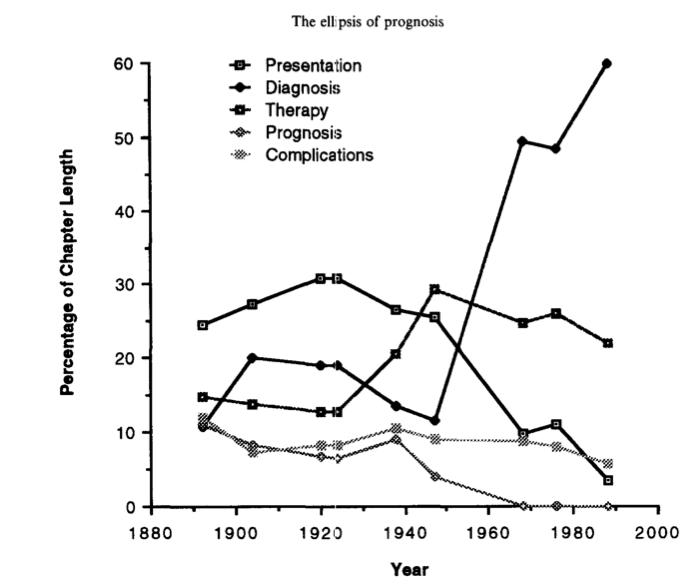
The Ellipsis of Prognosis in Modern Medical Thought
Abstract
Contemporary textbooks of internal medicine give scant attention to the prognosis of diseases. Has this always been the case? If not, when and why did prognosis come to be de-emphasized? Using a highly regarded, standard medical textbook initially authored by William Osler, The Principles and Practice of Medicine, I performed qualitative and quantitative content analysis of entries regarding lobar pneumonia in selected editions published between 1892 and 1988, with special attention to the period between 1892 and 1947. I chose lobar pneumonia because it was a leading cause of death throughout this period and because it is recognizable across time, thus making it possible to follow the evolution in clinical thinking about prognosis while holding constant the diagnosis. I argue that two powerful forces converged to lead to the ellipsis of prognosis: (1) the emergence of effective therapy, and (2) a fundamental change in the cognitive basis of medicine. With respect to the former, I show that there is a complementary, inverse relationship between the clinical acts of prognostication and therapy; as one increases in salience in the management of a disease, the other decreases. With respect to the latter, I argue that the particular clinical facts deemed to be important about a patient's case have shifted over time, and I explore changes in the clinical and cognitive foundations of physicians' estimation of patients' prognoses—in particular, “symptoms” and “complications.” I conclude that, concurrent with a shift in clinical thought from an individual-based to a diagnosis-based conceptualization of disease, prognosis came to be seen as intrinsic to diagnosis and therapy, and explicit attention to prognosis consequently diminished.
Citation:
N.A. Christakis, "The Ellipsis of Prognosis in Modern Medical Thought" Social Science and Medicine, 44(3): 301-315 (February 1997)